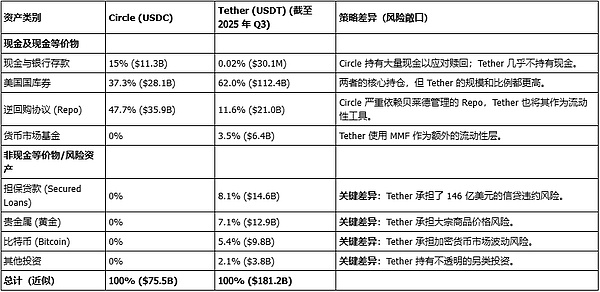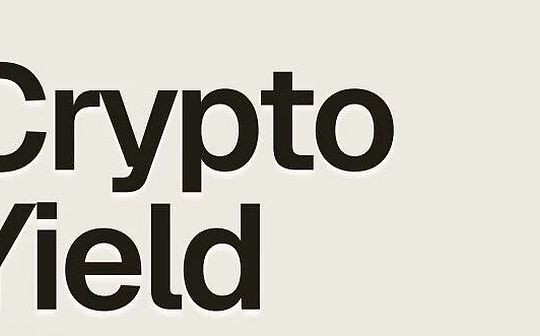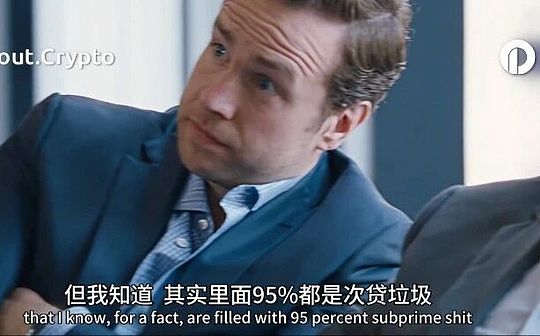
Author: Cole

In the turbulent world of encryption,Bitcoin and Ethereum are the stars of the spotlight, while stablecoins (such as USDT and USDC) are the “blood”, “fuel” and “chip” of this huge ecosystem..They connect everything together and are a safe haven for traders to avoid volatility. They are also the underlying settlement tool in the DeFi (decentralized finance) world.
You probably use them every day, but have you ever thought about the most basic question:
You give 1 USD to the issuer (such as Circle) and get back 1 USDC token.If you hold this token, you will not earn any interest.When you exchange U.S. dollars back, you only get $1 back.
However, these issuers are making a lot of money.Circle’s revenue in 2024 was as high as $1.7 billion, and Tether recorded a staggering profit of $13 billion in 2024.
Where did this money… come from?Let’s take a look at how the stablecoin system works and who is the real winner of this feast.
01Core “Money Printing Machine”
The business model of stablecoin issuers is so simple that it is almost “boring”, but it is extremely powerful because of its scale.It is essentially an ancient financial model:Play with “Float”.
It’s like a bank taking in demand deposits, or a money market fund (MMF), but the key difference is – itYou don’t need to pay a penny in interest on these “deposits” (the stablecoins you hold).
In the era of zero interest rates (before 2022), this model will make almost no money.ButU.S. Treasury yields have soared as the Federal Reserve has raised interest rates frantically in recent years..Circle and Tether’s profits also “took off”.
It is no exaggeration to say that the multi-billion dollar valuations of these stablecoin giants,EssentiallyA “leveraged bet” on the Fed’s macro policy of “keeping interest rates higher for longer”.Every time the Federal Reserve raises interest rates, it is like a direct “subsidy” to this industry.If the Fed returns to zero interest rates in the future, the core income of these issuers will instantly evaporate.
Of course, in addition to interest, the issuer also has a secondary source of income:Institutional handling fee;
-
Circle (USDC):To make it more comfortable for big customers like Coinbase, minting (depositing money) with Circle is free.A nominal fee will only be charged if the amount of redemptions (money withdrawals) an institution makes per day is excessive (more than $2 million).Circle’s strategy is:Maximize the size of your reserves(Making the “float” plate bigger).
-
Tether (USDT):Tether is more like a wild goose plucking its hair.Tether charges 0.1% for institutional clients whether they mint or redeem (minimum $100,000).Tether’s strategy is:Maximize revenue from every transaction(I want all the interest and handling fees).
02Circle vs. Tether’s strategic showdown
Although the cornerstones of their business models are the same, Circle and Tether have taken two completely opposite paths in how they manage their hundreds of billions of dollars in reserves.This creates their very different risk, transparency and profitability profiles.
Circle (USDC) Compliance and Transparency
Circle strives to establish itself as a “good student” who is trustworthy and embraces supervision.its strategic coreNot “please trust me”, but “please trust BlackRock”.
Circle’s reserve structure is extremely conservative and transparent.Instead of managing the tens of billions of dollars on its own, it chose to “outsource” this trust to the world’s largest asset management company——BlackRock.
The majority of Circle’s reserves are held in a vehicle called the “Circle Reserve Fund” (symbol USDXX).This is an SEC-registered government money market fund fully managed by BlackRock.Based on November 2025 data, this fund’s portfolio is boring as hell:55.8% of U.S. Treasury repurchase agreements and 44.2% of U.S. Treasuries.
-
The subtext of Circle is:“Dear institutions and regulators, I have solved the issue of reserve security that you are worried about. My money is not placed in some mysterious bank account, but is managed for me by BlackRock in a fund regulated by the SEC, and all I buy are the safest U.S. Treasury bonds.”
This is a brilliant strategic defense.Circle sacrificed some of its potential earnings (it needed to pay management fees to BlackRock) in exchange for long-term institutional and regulatory trust.
Tether (USDT) Aggressiveness and Profits
If Circle is a rigorous accountant, then Tether is an aggressive hedge fund manager.
Tether has been criticized for its transparency (it relies on BDO’s “assurance report” rather than a comprehensive financial audit), but its investment strategy is far more aggressive and diversified than Circle’s, and it has brought amazing profits as a result.
Let’s take a look at what’s in Tether’s reserves as of Q3 2025:
-
“General” section (like Circle): U.S. Treasury bills ($112.4 billion), overnight reverse repos ($18 billion), money market funds ($6.4 billion).
-
The “radical” part (Circle will never touch it):
Precious metals (gold): $12.9 billion;
Bitcoin: $9.8 billion;
secured loan: $14.6 billion;
Other investments: $3.8 billion.
Do you understand?Tether is not only earning interest on U.S. Treasury bonds, it is also shoulderingCommodity risk (gold), cryptocurrency volatility risk (bitcoin), and credit default risk (that $14.6 billion mystery loan).
The way Tether operates is not a money market fund at all, it is more like an “internal hedge fund”, and its source of funds is interest-free USDT held by users around the world.
This is the secret to Tether’s ability to achieve $13 billion in profits by 2024.It not only eats interest, but also gambles on capital gains from Bitcoin and gold, while obtaining higher risk returns through lending.
This also explains why Tether places so much emphasis on its “excess reserves” (or “net assets”, $11.9 billion as of August 2024).This money is not “profit” that can be distributed at will. It is a “capital cushion” and a “lightning protection fund” that Tether must set aside.It must use this money to absorb potentially huge losses from its risky assets (Bitcoin, loans) to prevent USDT from “unanchoring”.Tether must maintain high profits to support its high-risk asset game.

Comparison of reserve asset composition of Circle and Tether (data as of the third/fourth quarter of 2025)
03Where did the profits go?
How are these tens of billions of profits distributed?This once again reveals the huge differences between the two companies.
Circle (USDC)’s “Shackles”: Expensive Ledger Split with Coinbase
Although Circle’s revenue (Revenue) is high, its net profit (Profit) has been dragged down by a huge cost-that is, the revenue sharing agreement it reached with Coinbase.
Circle and Coinbase (co-founders of USDC) reached an agreement back in 2018, agreeingShare the interest income generated by USDC reserves.Coinbase gets 50% of the “remaining payment base.”
The agreement is calculated based on USDC holdings on the Coinbase platform.But by 2024, USDC on the Coinbase platform only accounts for about 20% of the total circulating supply, but this “archaic” agreement from the early years gives it the right to take about 50% to 55% of the total reserve revenue.
This distribution cost“eroded much of Circle’s profits.“.The proportion of revenue Circle pays to Coinbase surges from 32% in 2022 to 54% in 2024.In the second quarter of 2025, Circle had total revenue of $658 million, but “distribution, transaction and other costs” alone amounted to $407 million.
Therefore,Coinbase is not just a partner of Circle, it is more like a “synthetic equity holder” of USDC’s core revenue stream.Coinbase is both Circle’s largest distribution channel and its largest cost burden.
The “black box” of Tether (USDT)
Tether’s profit distribution is a completely opaque “black box”.
Tether (USDT) is owned by iFinex, a private company registered in the British Virgin Islands (BVI).iFinex also owns and operates the famous cryptocurrency exchange Bitfinex.
All of Tether’s reported profits of $13 billion flowed into its parent company, iFinex.
As a private company, iFinex is not required to publish detailed costs and dividends like Circle, a publicly traded company.But according to historical records and public information, the money has three destinations:
-
Shareholder dividends:iFinex (Bitfinex) has a history of paying out huge dividends to its private shareholders (like executives like Giancarlo Devasini) ($246 million was paid out in 2017, for example).
-
retained as capital buffer:As mentioned before, Tether keeps huge profits (such as $11.9 billion) on its books as “net assets” to hedge its holdings of risky assets such as Bitcoin and loans.
-
Strategic investments (or internal moves):Tether/iFinex is using those profits to diversify into high-profile forays into new areas such as artificial intelligence, renewable energy and Bitcoin mining.Moreover, Tether and Bitfinex have long had complex internal fund transactions (such as the famous Crypto Capital hole incident).
Therefore,Circle’s profit distribution isPublic, Expensive, and Locked (Coinbase).And Tether’s profit distribution isOpaque, discretionary, and controlled entirely by a small number of people within iFinex, the money is becoming ammunition to build its next business empire.
04How can ordinary players “get a share of the pie”?
Since the issuer eats up all the interest on the national debt, as holders of stable coins, how do we (crypto players) make money in this ecosystem?
The money we can make does not come from the issuer, but fromThe needs of other crypto users, earn profits by providing services (liquidity, loans) and taking on-chain risks.
There are three main ways to play:
Strategy 1: Lending
-
How to play:You deposit your USDC or USDT into an algorithmic currency market such as Aave or Compound.
-
Who pays you?:Borrower.They are usually traders who need to increase leverage, or “coin hoarders” who are in urgent need of cash but do not want to sell their Bitcoin/Ethereum.
-
How it works:Protocols like Aave and Compound automatically match lending and borrowing, adjusting interest rates in real time based on market supply and demand.You (the lender) earn most of the interest, and the protocol treasury takes a small percentage.
Strategy 2: Provide liquidity
-
How to play:You deposit your stablecoin (usually a trading pair like USDC/USDT or USDC/DAI) into a “liquidity pool” on a decentralized exchange (DEX).
-
Ace platform:Curve Finance
Curve is specially designed for the exchange between stable currencies (such as USDC for USDT), and its algorithm can achieve extremely low slippage (spread).
Who pays you?: Trader.Whenever someone trades USDC for USDT on Curve, they pay a very small fee (e.g. 0.04%).This fee will be prorated to you.
Extra bonus:In order to encourage you to provide liquidity, Curve will also “airdrop” you its governance token (CRV) as a reward.
-
Why is it popular?:Since the pool is all stablecoins anchored to 1 US dollar, you have almost no risk of “Impermanent Loss”, making it an ideal “rent collection” strategy.
Strategy 3: Yield Farming
-
How to play:This refers to a variety of more complex “matryoshka” strategies in pursuit of maximizing returns.
-
Give an example:you can
1) Deposit USDC into Aave;
2) Use this USDC as collateral to lend ETH;
3) Invest the borrowed ETH into other high-yield pools.
-
risk:This is the riskiest play.You face the risk of smart contracts being hacked, the risk of collateral (ETH) prices plummeting and being liquidated, and the risk of protocol rewards suddenly drying up.
05Summary
Ultimately, the story of stablecoins is “two economies“story.
The first is a private, off-chain feast:The issuer (Tether/Circle) poured your and my “idle” reserves into US Treasuries and split the resulting billions in interest with their shareholders and corporate allies (like Coinbase), while token holders received nothing.
The second economy is what we built ourselves – the vibrant, on-chain DeFi world.Here, users earn money from fees and interest paid by other users by lending and providing liquidity.
This reveals the core irony of the industry:A decentralized ecosystem whose “blood” is supplied by highly centralized “banks” that pursue profit maximization.The future of this vast empire hangs on two pillars:The first is the high interest rate macro environment that issuers rely on to survive; the second is DeFi users’ continued demand for speculation and leverage.
How long these two pillars can last may be the real ultimate question in this trillion-dollar track..







